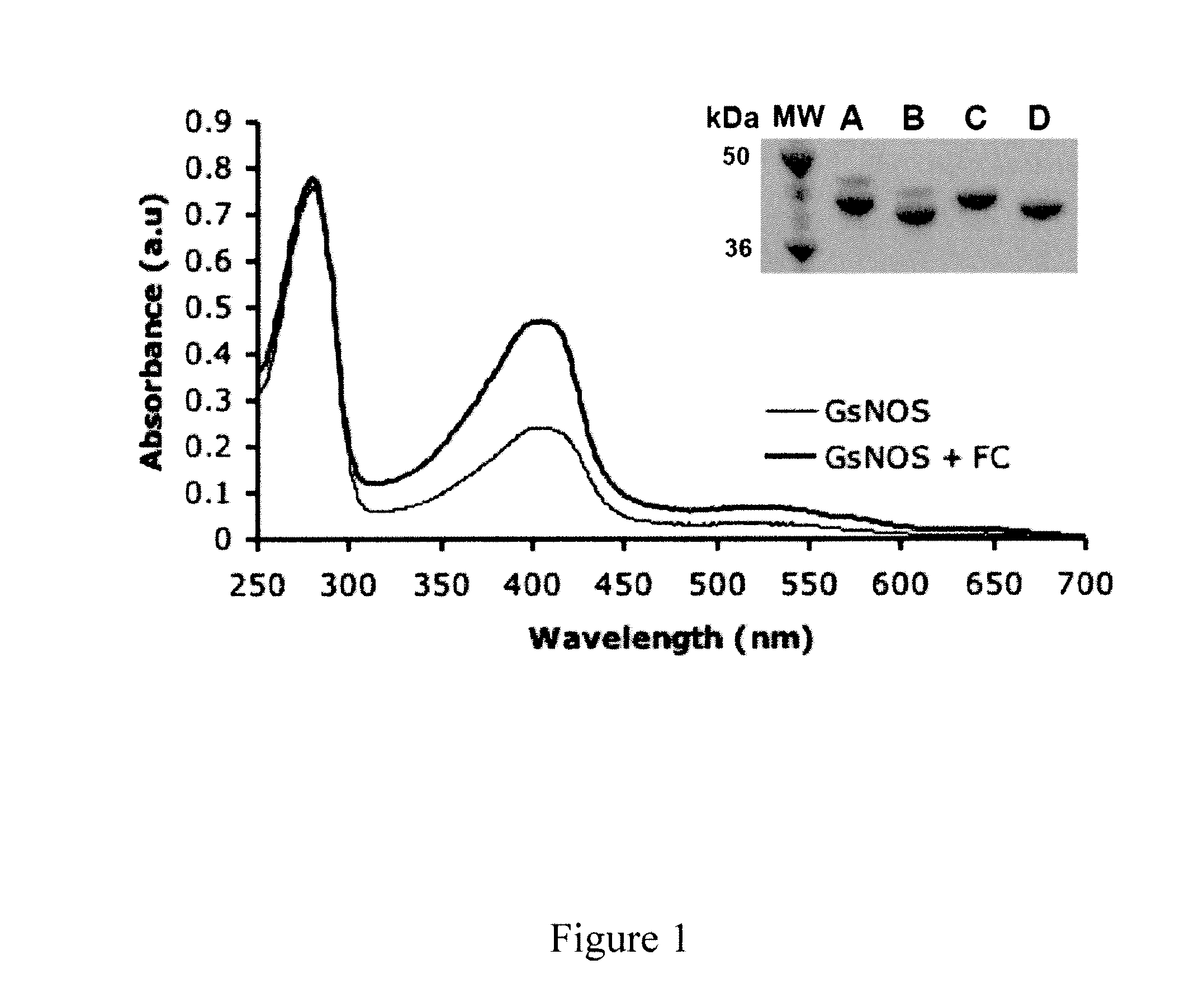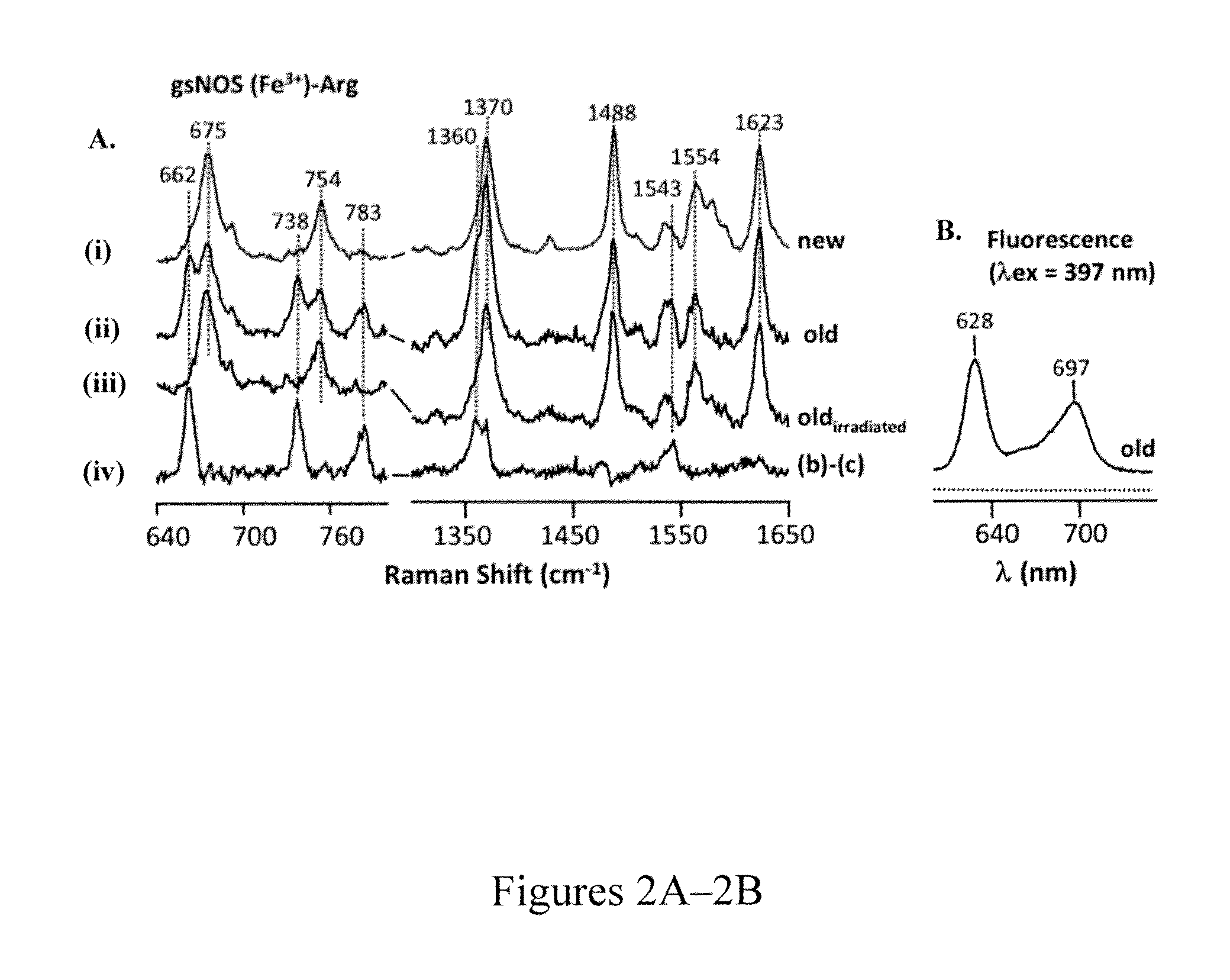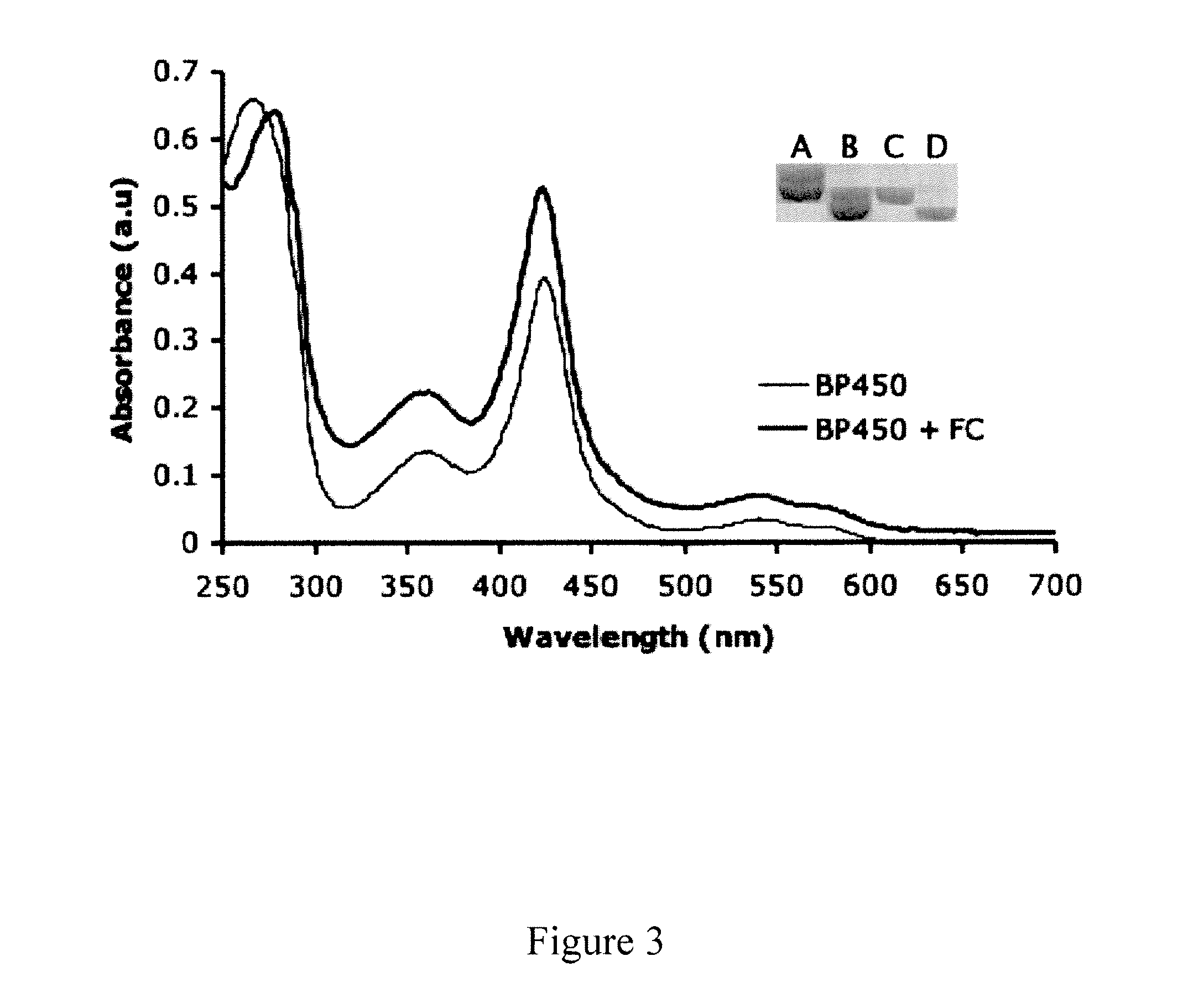Methods of producing recombinant heme-binding proteins and uses thereof
- Summary
- Abstract
- Description
- Claims
- Application Information
AI Technical Summary
Benefits of technology
Problems solved by technology
Method used
Image
Examples
example 1
UV-Vis Spectroscopy and SDS-PAGE Analysis of gsNOS
[0078]GsNOS (Geobacillus stearothermophihis Nitric Oxide Synthase) is a thermophilic enzyme that forms a highly stable heme-oxygen complex (Sudhamsu et al., “Structure and Reactivity of a Thermostable Prokaryotic Nitric-Oxide Synthase that Forms a Long-Lived Oxy-Heme Complex,”J. Biol. Chem. 281:9623-9632 (2006), which is hereby incorporated by reference in its entirety) that has helped in identification of catalytic intermediates responsible for L-arginine oxidation to nitric oxide (Davydov et al., “EPR And ENDOR Characterization of the Reactive Intermediates in the Generation of NO by Cryoreduced Oxy-Nitric Oxide Synthase from G. Stearotherniophilus,”J. Am. Chem. Soc. 131:14493-14507 (2009), which is hereby incorporated by reference in its entirety). In the over-expression of heme proteins the heme precursor δ-ALA is routinely added to the growth media when protein production is induced. Such δ-ALA supplementation results in complet...
example 2
Resonance Raman and Fluorescence Analysis of gsNOS
[0081]Confirmation of porphyrin incorporation into gsNOS came from resonance Raman studies of gsNOS in the presence of substrate L-arginine. A sample of gsNOS (expressed without FC) in the presence of substrate L-arginine, shows vibrational frequencies at 662 cm−1, 738 cm−1, 783 cm−1, 1360 cm−1 and 1543 cm−1, apart from the typical vibrational frequencies that have been previously observed (Santolini et al., “Resonance Raman Study of Bacillus Subtilis NO Synthase-Like Protein: Similarities and Differences with Mammalian NO Synthases,”Biochem. 45:1480-1489 (2006) and Rousseau et al., “Ligand-Protein Interactions in Nitric Oxide Synthase,”J. Inorganic Biochem. 99:306-323 (2005), which are hereby incorporated by reference in their entirety) for other NOSs (FIG. 2B). These additional bands disappear after exposure to laser (FIG. 2C) and the subsequent difference spectrum (before and after laser exposure) highlights the original, addition...
example 3
FC-Assisted Heme Incorporation for a Bacterial P450 (BP450) and a Heme-Binding PAS Protein (HBPAS)
[0083]In addition to gsNOS, FC also increases heme content to saturating levels in two other unrelated proteins: BP450, a Cys-ligated heme protein and HBPAS: a His-ligated heme protein. Both of these proteins, when over-expressed in E. coli, are produced with partial heme incorporation, UV-Vis spectra of purified BP450 and BP450 co-expressed with FC are strikingly different, with the increased intensity of the Soret peak indicative of greater heme content in the material produced along with FC (FIG. 3), When analyzed by SDS-PAGE, BP450 again also shows two bands (FIG. 3, Inset, lane A), which both shift on His-tag cleavage (FIG. 3, Inset, lane B). Like gsNOS, on co-expression with FC (FIG. 3, Inset, lane C) BP450 produces only one band, which shifts on His-tag cleavage (FIG. 3, Inset, lane D). In contrast, HBPAS always results in a single band on a SDS-PAGE gel, but shows absorption for...
PUM
| Property | Measurement | Unit |
|---|---|---|
| Fraction | aaaaa | aaaaa |
| Fraction | aaaaa | aaaaa |
| Fraction | aaaaa | aaaaa |
Abstract
Description
Claims
Application Information
 Login to View More
Login to View More - R&D
- Intellectual Property
- Life Sciences
- Materials
- Tech Scout
- Unparalleled Data Quality
- Higher Quality Content
- 60% Fewer Hallucinations
Browse by: Latest US Patents, China's latest patents, Technical Efficacy Thesaurus, Application Domain, Technology Topic, Popular Technical Reports.
© 2025 PatSnap. All rights reserved.Legal|Privacy policy|Modern Slavery Act Transparency Statement|Sitemap|About US| Contact US: help@patsnap.com



